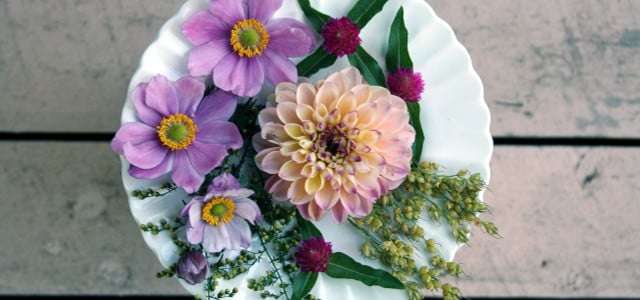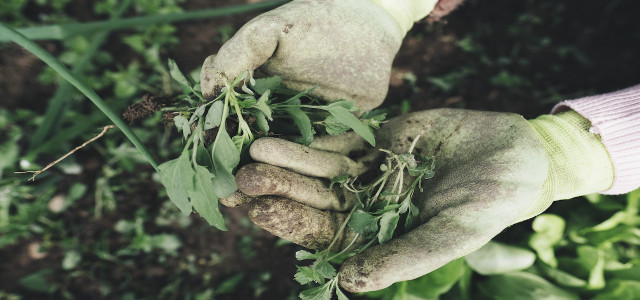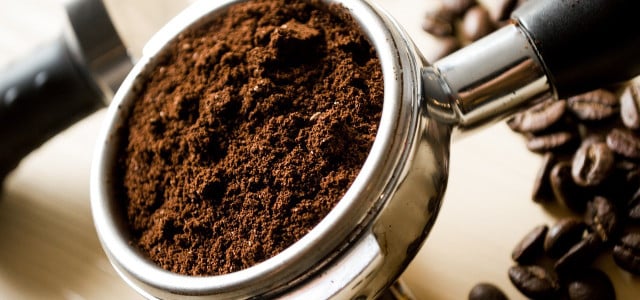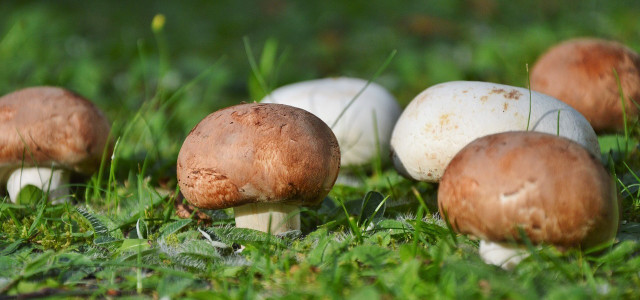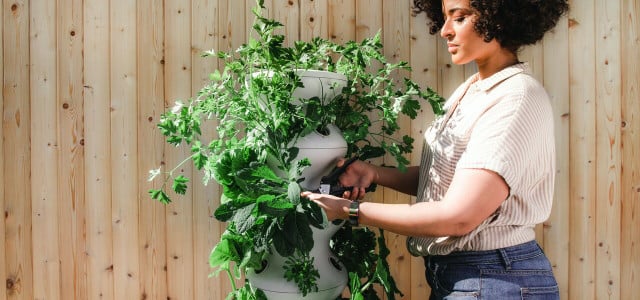Discover the world of edible flowers with this comprehensive guide, exploring safe selection, unique flavors, health benefits and creative culinary uses for these delicate delicacies.
Welcome to the enchanting world of edible flowers, where culinary delights and visual beauty meld together in perfect harmony. Many flowers can be enjoyed straight from the garden, offering not just decoration but also unique flavors and health benefits. Depending on the plant, you can use petals or even entire blossoms in food preparation, with aromas ranging from sugary-sweet to spicy pepper.
In addition to their culinary uses, some edible flowers are used as natural remedies. For instance, lavender blossoms can be used to make tea that eases stomach and digestive issues, as well as insomnia. Furthermore, hollyhock tea may help treat coughs and other breathing disorders, while chamomile tea is a popular herbal remedy for its wide range of curative properties.
This comprehensive guide and edible flowers list will take you on a journey through the vibrant world of edible flowers, providing you with the essential knowledge to safely select, prepare and enjoy them. We’ll also discuss the nutritional and potential medicinal benefits of edible flowers, along with tips for harvesting, storing and incorporating them into your culinary repertoire. We’ll even explain how to grow your own!
Let’s dive into the world of edible flowers.
Edible Flower Safety and Selection
Whether you buy your flowers from a store or market or forage them yourself, the most important thing is to do it safely. Steer clear of contaminants and pesticides by choosing flowers from organic gardens or wild areas that have not been subjected to chemical treatments and aren’t close to motorways. And always wash flowers thoroughly before eating them.
When in doubt, contact a field guide or local expert — such as a botanist or experienced forager — to confirm the flower’s credibility.
Avoid Toxic Flowers:
Furthermore, be careful to avoid toxic flowers and other poisonous plants. Some flowers may look beautiful but are toxic if consumed. Be aware of common poisonous plants, such as lily-of-the-valley, foxglove and oleander. If you are uncertain about a flower’s safety, it’s best to err on the side of caution and avoid eating it.
Misidentifying a flower can have serious consequences, as some toxic plants closely resemble edible ones. For example, the deadly poison hemlock can be mistaken for wild carrot.
Read on: The 10 Most Deadly Flowers in the US
Full Edible Flowers List
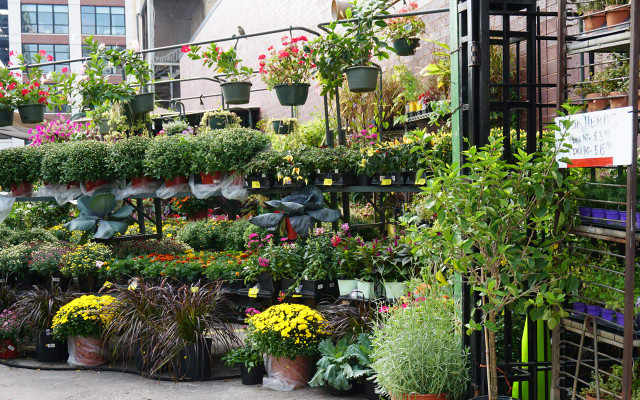


Let’s take a look at the vast and colorful array of edible flowers, each with its own unique flavor profile and culinary applications.
List of Edible Flowers and Flowering Herbs:
- Angelica: This tall plant produces clusters of small, white flowers with a subtle, sweet flavor. They can be used to garnish desserts, salads, and beverages.
- Arugula: Although best known for its peppery leaves, arugula also produces edible flowers that have a similar spicy flavor. The small, white or yellow blossoms can be used to garnish salads, sandwiches and pasta dishes.
- Borage: The delicate, blue borage flowers have a mild cucumber taste, making them a delightful addition to salads, cocktails and cold soups. Borage is also one of the top 11 flowers for bees.
- Calendula: Also known as “pot marigold,” calendula has a tangy, slightly bitter flavor. Its petals can be used in salads, soups, and as a garnish for main dishes.
- Chamomile: With a gentle, apple-like flavor, the chamomile plant is most famous for its use in herbal teas. It can also be added to baked goods, salads and sauces to impart its soothing, aromatic essence.
- Chive blossoms: Purple chive flowers have a mild onion flavor and can be used to garnish salads, soups and main dishes.
- Clover: With a sweet, mild flavor, clover flowers can be used in salads, teas and as a garnish for desserts and other dishes.
- Daisies: With a mildly sweet, slightly grassy taste, daisy flowers can be added to salads, sandwiches, and cold dishes. Be sure to remove the bitter, white base of the petals before consuming.
- Dandelions: Often considered a weed, you can easily learn how to eat dandelions. Their slightly bitter, honey-like flowers can be added to salads, sautéed or used to make wine, dandelion tea and even dandelion honey.
- Elderflowers: With a subtle, sweet flavor, these delicate buds are commonly used to make elderflower cordial, elderflower syrup, and the popular elderflower liqueur, St-Germain.
- Fuchsia: These striking flowers have a tangy, slightly acidic flavor, making them a great addition to fruit salads, desserts, and beverages.
- Hibiscus: The beautiful, tropical hibiscus flower has a tart, cranberry-like flavor. Its vibrant petals can be used to make teas, syrups and jams, and it is a popular ingredient in cocktails and iced beverages. It’s also a fantastic sun-loving plant if you have lots of direct sunlight in your garden.
- Jasmine: Known for its intoxicating fragrance, jasmine flowers can be used in teas, desserts, and as a garnish for rice dishes.
- Lavender: Known for its calming fragrance, lavender also adds a delicate floral flavor to dishes. It is particularly popular in desserts like ice cream, cookies and cakes, as well as in beverages like teas and cocktails.
- Lilacs: The fragrant flowers of the lilac bush have a slightly bitter, floral taste and can be used in salads, drinks, and desserts.
- Marigolds: Offering a slightly bitter, citrusy taste, marigolds are often used in salads, soups and rice dishes. The petals can be used as a natural food coloring, and they are sometimes used as a substitute for saffron. Furthermore, they’re one of the best plants to naturally repel mosquitoes.
- Nasturtiums: With their vibrant colors and peppery taste, nasturtiums are edible and add a lively kick to salads, sandwiches, and pasta dishes. The leaves and flowers are both edible, making them versatile additions to various recipes.
- Pansies: These charming flowers have a mild, slightly sweet flavor, making them ideal as garnishes for salads, desserts and drinks. Pansies can also be crystallized for an elegant, edible decoration any time of year — did you know they’re one of the few plants that flower in winter?
- Roses: With their sweet, fragrant flavor, rose petals can be used in desserts, jams and beverages. They pair particularly well with chocolate and can also be used to make delicate, aromatic syrups.
- Scented geraniums: The colorful flowers of scented geraniums have a flavor that varies depending on the variety, ranging from lemony to spicy. They can be used in desserts, drinks, and salads.
- Thyme: The tiny, tubular flowers of the thyme plant share the herb’s aromatic, earthy flavor. They can be used as a garnish for meat dishes, pasta, and salads or incorporated into sauces and stews. Learn more about thyme’s benefits and uses.
- Violets: These dainty flowers have a sweet, floral taste and can be used in desserts, salads, and as garnishes for drinks. They can also be crystallized or made into syrups and jellies.
- Violas: Similar to pansies, violas offer a mild, slightly sweet flavor, and can be used as a garnish for desserts, salads and drinks.
- Wild Garlic: Also known as ramsons or bear’s garlic, wild garlic produces small, star-shaped white flowers with a mild garlic flavor. They make a tasty addition to salads, soups and main dishes.
- Yarrow: Yarrow flowers have a slightly bitter, herbaceous taste, and can be used sparingly in salads, soups, and as a garnish for main dishes. It is also often used in herbal teas for its potential medicinal properties. Learn more about yarrow’s benefits.
- Zucchini blossoms: The large, yellow flowers of the zucchini plant have a delicate, slightly sweet flavor. They are often stuffed with cheese and fried, or can be added to salads and pasta dishes.
How Do You Use Edible Flowers?
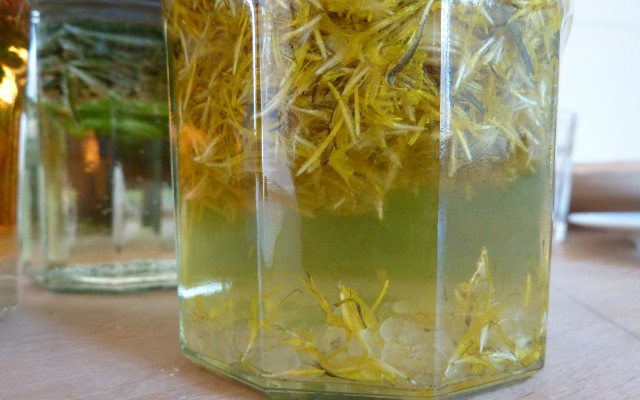


Edible flowers have many applications in the kitchen – you can use them fresh, dried, raw, fried, turned into syrups or jellies or preserved in vinegar or alcohol. Herbs and vegetable flowers add a fine note to savory dishes, while flower blossoms are an excellent choice for sweet dishes and drinks. Here are some of our favorite ways to use them:
Herb dips and butter: You can also add chopped flowers to herb dips or butter. These go great spread on bread or baguettes, served alongside baked or boiled potatoes, steamed vegetables and grilled meals.
Flower-infused oils and vinegars: Add edible flowers, such as lavender or rose, to olive oil or vinegar, and let them steep for a few weeks to create infused oils or vinegars. Use these in salad dressings, marinades, or drizzled over dishes for a subtle floral touch.
Flower-infused sugars and salts: Combine edible flower petals, like lavender or rose, with sugar or salt, and let them sit for a few days. Use the infused sugars in baking or as a sweet topping, and sprinkle the flavored salts over tofu or meats, vegetables and other savory dishes.
Salads: Freshly-picked blossoms from arugula, borage, daisies and nasturtium can be used to spice up a green salad, adding color, flavor and texture.
Fried flower dishes: Elderberry flowers can be dipped in batter, fried and served as a main dish. The same goes for zucchini: fill the blossoms with cream cheese (or your preferred vegan alternative like cashew cream cheese or our popular potato cheese recipe) and enjoy with a salad.
Desserts: Incorporate edible flowers like lavender or hibiscus into sweet treats such as cakes, cookies and ice cream, adding both flavor and visual appeal. Ensure the flowers you use are suitable for baking, as some may lose their flavor when exposed to heat.
Check out Utopia’s dessert section for some mouthwatering recipes and inspiration.
Candied flowers: Coat edible flowers, such as rose petals or violas, with a thin layer of beaten egg white (or vegan egg substitute) and dust them with superfine sugar. Let them dry on a rack, and you’ll have elegant candied flowers to use as a decorative topping for cakes, cupcakes or other desserts.
Drinks: Create refreshing floral drinks by steeping edible flowers in water, teas or lemonades. Some popular choices include elderflower gin cocktails, lavender lemonade, hibiscus iced tea and rose petal-infused water. Flowers also make fantastic garnishes and flavorful additions to these tasty summer spritz cocktails.
Ice cubes: Add small edible flowers or petals to your ice cube tray and fill it with water. Freeze to create eye-catching floral ice cubes that will elevate your cold drinks.
Floral garnishes: Use edible flowers as a garnish for both sweet and savory dishes. Place them on top of desserts, like cakes or ice cream, or use them to add visual appeal to main courses, such as grilled fish or roasted vegetables.
Main courses: Edible flowers can also be used in main courses, adding an extra layer of sophistication and taste. Sprinkle marigold petals over rice dishes, or use nasturtium flowers to garnish a grilled meal.
Stuffed flowers: Larger edible flowers, like squash blossoms or hibiscus, can be stuffed with a variety of fillings, such as herbed goat cheese, ricotta (or vegan ricotta) or seasoned ground meat (or vegan ground beef substitute). Once filled, you can either bake or fry them to create a delicious appetizer or main dish.
Flowers’ Nutritional and Medicinal Benefits
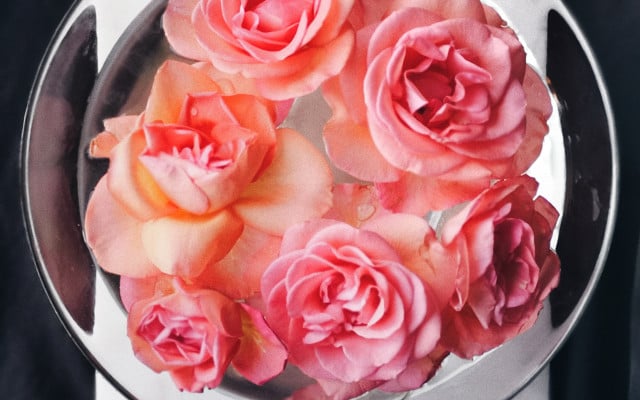


Edible flowers not only add a burst of color and flavor to your dishes but also offer a range of nutritional and medicinal benefits. Many of these blossoms are rich in vitamins and minerals, such as vitamin C, vitamin A and potassium, making them a nutritious addition to your diet. They often contain high levels of antioxidants, which can help protect your body against oxidative stress and promote overall health. Moreover, using edible flowers is a creative way to introduce new flavors without adding a significant number of calories.
In addition to their nutritional value, some edible flowers have long been used in traditional herbal medicine for their potential therapeutic properties. Flowers like chamomile, lavender and yarrow are known for their calming effects. Others, like calendula and nasturtium, are believed to have anti-inflammatory and antimicrobial properties that may contribute to overall well-being.
Harvesting and Storage
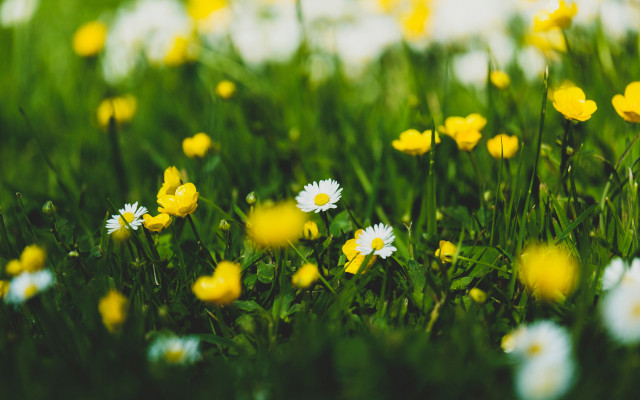


When it comes to harvesting, storing and preparing edible flowers, there are several key tips to consider:
To ensure optimal flavor and freshness, harvest edible flowers in the morning after the dew has evaporated and handle them gently to avoid bruising and maintain their integrity.
For storage, place the flowers in a sealed container in the refrigerator with a slightly damp towel to keep them fresh. Some flowers, such as lavender and chamomile, can be dried for long-term storage and used in teas, potpourri or other recipes.
Check out our guide How to Dry and Preserve Flowers for tips on keeping flowers around longer.
How to Prepare Edible Flowers
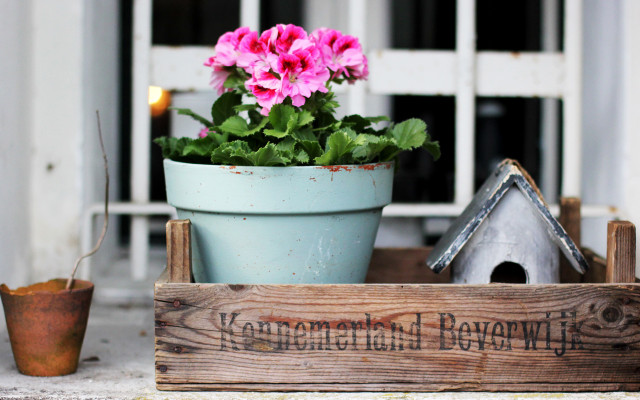


Before preparing edible flowers, rinse them gently but thoroughly under cool water to remove any dirt or insects. Depending on the specific flower, you may need to remove stems, stamens or the white base of the petals, as these parts can be bitter or inedible.
Edible flowers can be eaten several ways, depending on the dish. They can be eaten raw, fried, baked or incorporated into recipes as a flavoring, garnish or main ingredient. By following these guidelines, you can make the most of edible flowers and fully enjoy their unique flavors and aesthetic appeal.
Growing Your Own Flowers to Eat
Growing any of the flowers on our edible flowers list can be a rewarding and enjoyable endeavor, providing you with fresh, organic and beautiful ingredients. Here are the basics.
Choosing the right flowers:
Before planting, research which plants are suitable for your climate and garden space. Opt for organic seeds or plants to ensure your flowers are free from harmful chemicals. Purchase them from a reputable nursery or garden center specializing in edible flowers.
Planting and care:
Prepare your garden bed by loosening the soil and adding organic matter, such as compost or aged manure, to provide the necessary nutrients for healthy growth. Plant edible flowers according to their specific spacing and sunlight requirements. Some flowers, like nasturtiums and pansies, prefer partial shade, while others, like calendula and borage, thrive in full sun. Maintain consistent moisture levels in the soil to promote healthy growth, being cautious not to overwater, as this can lead to root rot and other issues.
Monitor your edible flowers for pests and diseases, and treat them with natural pesticides or organic methods, such as insecticidal soap, neem oil or introducing beneficial insects like ladybugs.
By selecting the right flowers for your garden, caring for them properly and harvesting them at the right time, you can enjoy the many benefits of these vibrant and flavorful plants right from your backyard.
Enjoy Your Favorite New Ingredients
As you experiment with our edible flower list’s many different options, you’ll discover a whole new world of taste and beauty, enhancing your dining experience and leaving a lasting impression on your guests. So, embrace the world of edible flowers and let your creativity blossom!
Read more:
- How to Use PLU Codes to Identify Organic Produce Fast
- Epsom Salt for Gardening: Is it Safe for Plants?
- Cold Composting 101: How to Get Started
Do you like this post?






